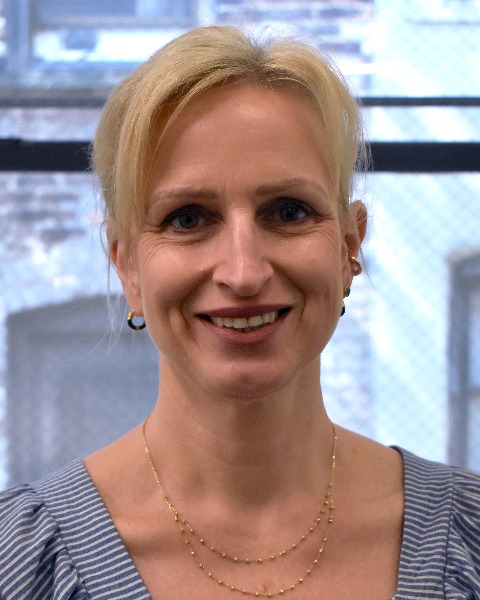UTILIZING MICROCURRENT THERAPY AS AN ADJUNCT IN TREATMENT OF A CHILD WITH A SEVERE PRESENTATION OF CONGENTIAL MUSCUALR TORTICOLLIS: A CASE REPORT
Saturday, October 28, 2023
9:00 AM - 10:30 AM CST
Location: Ballroom B/C

Magdalena M. Oledzka, PT, DPT, PhD, MBA, PCS
Pediatric Lead
Hospital for Special Surgery
Glendale, New York, United States
Background & Purpose: Conservative therapy management of congenital muscular torticollis includes cervical passive and active ROM exercises, strengthening, parent education, and positioning.2 Addition of microcurrent therapy has been shown effective, but it has been slow to be adapted.3,4,5
Case description: Ten month-old girl diagnosed at 4 months of age with grade 3 right CMT. She has been undergoing treatment 1-2 times a week since her diagnosis and presented to this therapist at age of 10-months for a second opinion. She presented with 15 degrees of right head tilt in supine and 20 degrees in sitting, 25 degrees restriction of passive cervical lateral flexion, and 20-degree restriction of passive cervical rotation, and 30 degrees of active cervical rotation. Microcurrent therapy was initiated at 13 months of age during therapy sessions twice a week for a period of 16 weeks for a total of 24 sessions. Microcurrent was administered via Chattanooga Vectra Genisys with 1- inch circular gel pads attached to the middle section of SCM and at SCM insertion. In addition, tubular orthosis for torticollis (TOT collar) and kinesiotaping were utilized. Outcomes: This patient achieved full passive and active cervical ROM. Her cervical muscle strength was symmetrical. She spent 90% of time with her head in midline and presented with symmetrical gross and fine motor skills. Combining first choice traditional interventions with addition of microcurrent therapy, TOT collar, and kinesiotaping resulted in achieving a full cervical range of motion, midline head alignment, and possibly helped this child avoid surgical intervention.
Case description: Ten month-old girl diagnosed at 4 months of age with grade 3 right CMT. She has been undergoing treatment 1-2 times a week since her diagnosis and presented to this therapist at age of 10-months for a second opinion. She presented with 15 degrees of right head tilt in supine and 20 degrees in sitting, 25 degrees restriction of passive cervical lateral flexion, and 20-degree restriction of passive cervical rotation, and 30 degrees of active cervical rotation. Microcurrent therapy was initiated at 13 months of age during therapy sessions twice a week for a period of 16 weeks for a total of 24 sessions. Microcurrent was administered via Chattanooga Vectra Genisys with 1- inch circular gel pads attached to the middle section of SCM and at SCM insertion. In addition, tubular orthosis for torticollis (TOT collar) and kinesiotaping were utilized. Outcomes: This patient achieved full passive and active cervical ROM. Her cervical muscle strength was symmetrical. She spent 90% of time with her head in midline and presented with symmetrical gross and fine motor skills. Combining first choice traditional interventions with addition of microcurrent therapy, TOT collar, and kinesiotaping resulted in achieving a full cervical range of motion, midline head alignment, and possibly helped this child avoid surgical intervention.

.png)
.png)
.png)
.png)
.png)
.png)
.png)